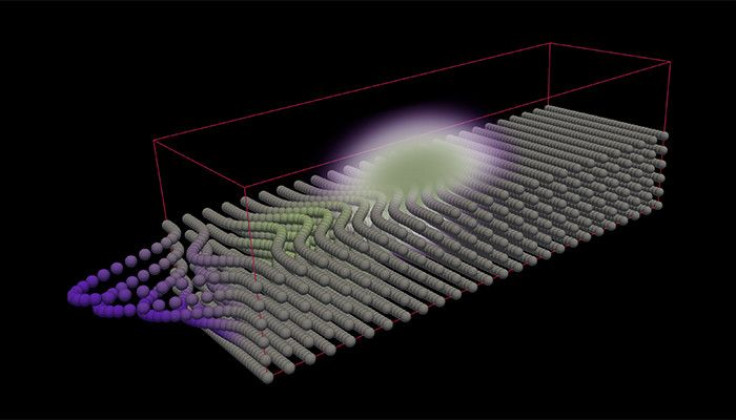Does Light Experiment Disprove Big Bang Theory? Photon Energy Loss Questions Expanding Universe

Light moves in mysterious ways, but scientists may have cracked the case when it comes to momentum, and their findings could change the way we view and understand the universe.
Researchers observing photons of light as they passed through a transparent material in a computer simulation have watched the light offsetting atoms in the material, transferring momentum to them and thus losing energy, according to an article in the journal Physical Review A. The material is essentially creating drag for the light and slows it down.
Read: How to Reach Faraway Galaxies? Travel on a Light Beam
“Since our work is theoretical and computational it must be still verified experimentally, before it can become a standard model of light in a transparent medium,” researcher Mikko Partanen said in a statement from Aalto University in Finland. However, the research suggests that “measuring the total momentum of a light pulse is not enough, but one also has to measure the transferred atomic mass” to understand how light moves.
As Partanen notes that the finding must be verified experimentally, it should also be noted that the whole idea of light losing momentum to the material around it has been a controversial one for many years. The concept has been dubbed “tired light,” and it would have implications for how we understand the universe. Part of what makes it controversial is that it could mean the universe is not really expanding, as is commonly believed.
When astronomers view the distant universe, they see what’s called redshift: They observe longer wavelengths than they do in the sections of the universe that are closer to Earth — and when it comes to the spectrum of color, red wavelengths are on the longest end, as compared to the other colors of the rainbow like blue. This has been interpreted as those faraway objects moving away from us at a faster speed, one of the cruxes of the expanding universe theory that has been tied to the explosive Big Bang theory that scientists believed created everything to begin with.
But tired light suggests that those areas are not really moving faster away from us. Rather, the observation is caused by light that has run out of gas en route to our eyeballs; it’s been tuckered out from its transfer of energy over such a long distance.
Read: “Lighthouse” Star Orbits Black Hole
One counterargument from opponents of tired light is that we don’t observe a sort of blur coming from distant galaxies as their light slows down on the way toward us. Dissenters also argue that a redshift on the electromagnetic spectrum is not the only information scientists have supporting an expanding universe, while the concept of tired light does not take those other elements into consideration.
But according to the Finnish researchers, their simulation of light transferring momentum in a transparent medium would also apply to interstellar gas. In that scenario, a redshift in light would be explained by the distance between a star and its observer, with the light slowing over great distances.
It still remains whether the scientists can repeat the simulation’s results with real light.
© Copyright IBTimes 2024. All rights reserved.











